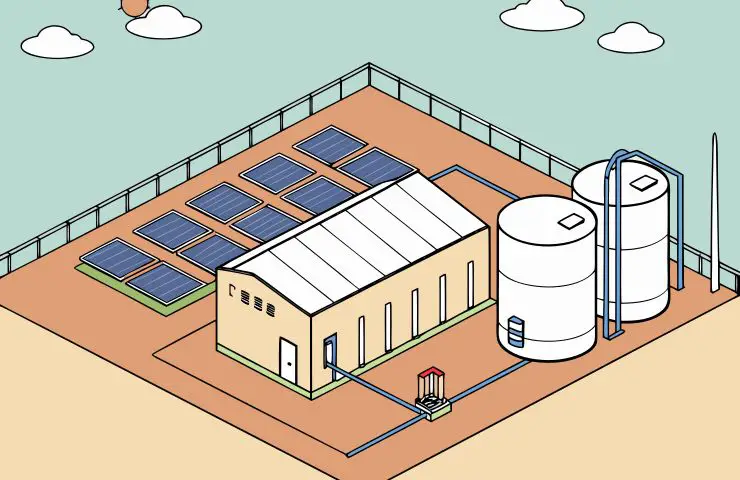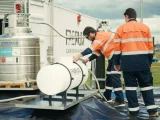
Green Hydrogen Powers Clean Ammonia Production for NSW Cotton Farming
October 30, 2025Out on the western edge of Moree’s cotton belt, a bold new venture is reshaping agricultural supply chains by pairing renewable energy with cutting-edge electrolysis.
Hiringa Energy, Sundown Pastoral Company and the New South Wales Government havehit financial close and broke ground on the Good Earth Green Hydrogen and Ammonia (GEGHA) project. Right next to the Wathagar ginning facility at Sundown’s Good Earth Cotton farm near Moree, NSW, this facility combines a 27 MW solar PV array, 30 MWh of grid-forming lithium-ion battery storage and Ampt String Optimizers. Together, they drive electrolyzers that will crank out up to 224 tonnes of green hydrogen each year. That hydrogen then transforms on-site into 4,500 tonnes of low-carbon ammonia fertilizer—replacing imported, fossil-fuel-derived alternatives and slashing roughly 17,000 tonnes of CO₂-equivalent emissions annually.
Project Snapshot
- Location: Good Earth Cotton farm, Moree region, NSW, Australia
- Capacity: 27 MW solar PV; 30 MWh battery storage
- Annual Output: 224 t green hydrogen; 4,500 t low-carbon ammonia
- CO₂ Reduction: ~17,000 tCO₂e (≈6,500 cars off the road)
- Funding: AUD 35.8 million grant (NSW Net Zero Plan) + NAB finance
- Engineering: Kinelli
- Construction Start: October 2025
Driving Forces
Volatile fertilizer prices and agriculture’s hefty carbon footprint are front and center here. By producing low-carbon ammonia on-site with solar-powered electrolysis, cotton growers under the Good Earth Cotton banner lock in stable input costs, strengthen local supply security and steer clear of grey ammonia imports. It’s a win-win for both budgets and the planet.
Tech Under the Hood
Ampt String Optimizers make it possible to DC-couple the 27 MW PV array directly into the shared DC bus, which also feeds the 30 MWh battery and grid-forming inverters. This setup squeezes every drop of solar power, sending excess energy into the batteries and keeping the electrolyzers humming even after sundown. The electrolyzers then split water into hydrogen and oxygen, using only renewable electricity to deliver certified green hydrogen. That hydrogen flows straight into a synthesis loop, where it’s converted into clean ammonia that meets top-tier agronomic standards.
Business and Strategic Implications
Backed by the NSW Government’s Net Zero Plan Stage 1: 2020–2030 and financed by National Australia Bank, GEGHA signals strong investor faith in hydrogen-agriculture tie-ups. For Sundown Pastoral, it underpins the Good Earth Cotton brand’s promise of regenerative, low-carbon farming. Hiringa Energy cements its spot as a regional hydrogen infrastructure leader, and the partnership with Ampt and Kinelli lays out a scalable blueprint for other hard-to-abate sectors.
Historical Context: From Grey to Green Ammonia
The global ammonia industry has leaned on the fossil-fuel-hungry Haber-Bosch process since the early 20th century, producing over 500 million tonnes of CO₂ annually. Australia imports more than 80% of its fertilizer, leaving growers exposed to unpredictable markets. GEGHA’s local, hydrogen-based approach marks a decisive turn toward sustainable energy and resilient supply chains.
Regional Impact
Moree, home to about 13,700 residents, sits at the crossroads of traditional cotton farming and booming renewables. With sun-soaked days and ready grid connections, the region already hosts multi-megawatt solar farms. GEGHA ensures local growers get clean fertilizer, creates construction and operations jobs, and injects fresh economic activity into the community.
Collaboration as a Catalyst
No single organization could pull off GEGHA alone. Hiringa Energy lends its hydrogen know-how, Sundown Pastoral supplies the on-farm demand, Ampt and Kinelli tackle the technical design and integration, and NSW Government funding plus NAB finance lock in the dollars. This public-private partnership model is crucial for breaking through regulatory, technical and economic hurdles on the road to net zero.
Implications for Industrial Decarbonization
Beyond cotton, GEGHA’s co-location of solar, storage, electrolysis and ammonia synthesis can slash emissions in horticulture, livestock feed and other ammonia-hungry industries. The project paves the way for reliable industrial decarbonization and sets the stage for Australia to export green ammonia and hydrogen from its renewable-rich heartlands.
Technical Hurdles and Next Steps
Key challenges include securing a steady, clean water supply for electrolysis, installing robust water treatment systems, keeping equipment reliable in a remote spot and staying ahead of evolving safety rules for hydrogen and anhydrous ammonia. Commissioning milestones—like dialling in electrolyzer efficiency, integrating advanced process controls and verifying ammonia purity—will be under close watch. The lessons learned here should drive down future capex and smooth out permitting across the country.
Looking Ahead
As shovels hit the ground in October 2025, everyone will be tracking metrics like the levelised cost of hydrogen, system uptime and carbon abatement. A successful launch could accelerate policy support for hydrogen-farming clusters and spark an export bonanza. In the end, GEGHA offers a practical roadmap for tying agricultural demand to renewable supply—a crucial stride in Australia’s journey toward sustainable energy leadership and industrial decarbonization.


 With over 15 years of reporting hydrogen news, we are your premier source for the latest updates and insights in hydrogen and renewable energy.
With over 15 years of reporting hydrogen news, we are your premier source for the latest updates and insights in hydrogen and renewable energy.